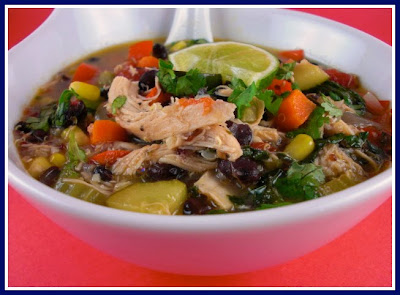

Congee is a nourishing food because the warmth supports normal Spleen qi function even in times when the Kidney qi may be weakened. In Chinese theory, the Kidney qi supplies the fire for warming the digestive fire to support digestion. Think of the Spleen like a cauldron: for food to break down appropriately, the cauldron has to be heated by a fire beneath it. There is also a Stomach but that merely receives the food we eat the actual breaking down of food, unappetizingly called the “rotting and ripening” function, happens in the Spleen. What we consider our “stomach” is actually more akin to the Chinese idea of the Spleen (italicized here to denote the Chinese concept of the organ, not the physical organ in our bodies). This thinking can perhaps be best understood when we look at the Chinese concept of how digestion functions. This is as good as a decoction of ginseng.”(2) Gentle and digestible, an old Chinese text states, “when treating the depleted patient, use thick rice soup. It particularly benefits the stomach and intestines and is most suitable for babies, people with gastro-intestinal complaints, and people with long-term illnesses. It is basically rice cooked with extra water or stock for a long time. My recommendation is to make it in small quantities.Congee, also known as Jook, is a loose rice soup has been considered a medicinal food in China since the Han Dynasty in 206 BCE. Leftovers need to be reheated with warm water and lose the texture in the process. The dish thickens as it cools, and is best served warm. Sprinkle some cardamom powder and garnish with fried cashew nuts and raisins and call it a payasam :-). So if you have leftovers, add more jaggery and coconut milk. You might have noticed that this recipe is similar to payasam, but not as sweet. But towards central Kerala, the savory versions are preferred and served with mixed vegetable avialor jackfruit avial.


In our family, we are used to the sweet version. Some are brown and sweetened with jaggery while others are pristine white or savory. There are many variations of Vishu Kanji, some thick like a cake that you can slice into ( Vishu Katta) and some thinner like a soup. If you let it cool down completely you could make laddus (or Vishu katta ) with it or slice and serve it as breakfast cakes. I like to have my Vishu Kanji warm in a semi-solid form. This is the rice of choice for sweet deserts like Nei Payasamor Pal Payasam as it cooks much faster than the traditional red parboiled rice. Unakkalari is raw rice with most of the bran intact – similar to brown rice, but more delicious. The sweetness is ever so light, and the spices are used to tone it down.

You start the year off with something nice and auspicious – by seeing the Kani as the first thing in the morning. Vishu is the new year according to the Malayalam Zodiac Calendar. For natives of Kerala, it is a great way to start the new year right. Versions of these recipes are found throughout the region – Kichidi and Pongal are popular versions. It is a warm breakfast porridge that is light, healthy, and easy to consume. This is our Vishu Kanji which we make at least once in April.


 0 kommentar(er)
0 kommentar(er)
